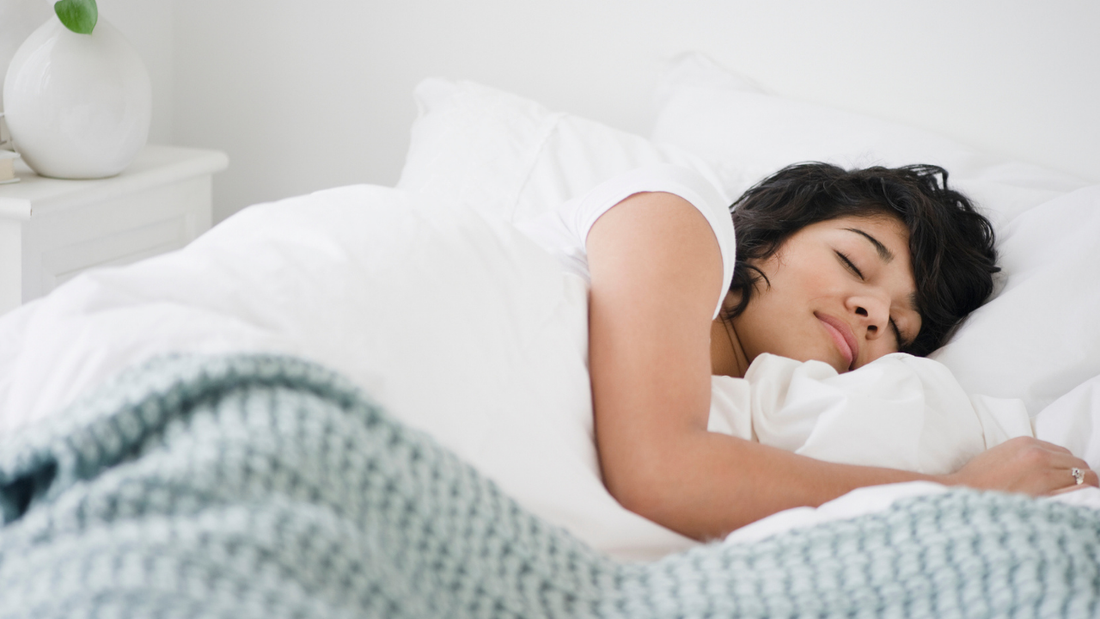Read Time: 4 min | Categories: Mental Health and Sleep
The Best Positions for Sleep
Webber Naturals
Share this article
Getting a good night’s sleep is incredibly important for your health. We all know this. But attaining that deep, restful sleep for as long as your body needs it can be challenging. Even if you get those full eight hours, being in an uncomfortable position can negatively impact your quality of sleep.
Not only is it hard to fall asleep if you can’t get comfortable, but certain sleep positions can cause you to wake up with a stiff neck, aching back, or those pins-and-needles feelings of numbness in the arm all too familiar to most of us.
Some sleep positions can help people with certain health conditions, such as lower back pain or neck pain, as well as women who are pregnant. But there isn’t a one-size-fits-all sleep position that will guarantee better rest.
If you experience pain or have trouble staying asleep, it may be time to switch up your sleep position. While this isn’t something you can change in one night, gradually training yourself into a new sleep position can prove to be the secret to getting those precious Zs.
In this blog, we’ll outline the pros and cons of each sleep position and provide tips that you can consider.

Sleeping on Your Side
Also known as: Lateral position
The vast majority of people sleep on their sides [1], with one hand underneath their head or pillow and the other arm cradling their body.
Pros
- Reduces snoring
- Helps with GERD (gastroesophageal reflux disease, which is when stomach acid flows into the area between your stomach and your mouth), especially if you sleep on your left side [2]
- Women who are pregnant sleep more easily and comfortably in this position
- People with enlarged hearts will find it most comfortable to sleep on their right side [3]
Cons
-
Can be uncomfortable for your shoulders, and you may experience that pins-and-needles feeling of numbness if you lay your head on your arm
Tips
To make this position more comfortable for lower back pain, put a pillow between your legs to support your spine. Make sure that the pillow underneath your head is high enough to support your head and neck, so you don’t need to use your arm to prop up your head.

Sleeping on Your Back
Also known as: Supine position
With your spine in a neutral position and your head on your pillow, this is the second most popular sleep position.
Pros
- Protects your spine and may help reduce back pain, as your weight is evenly distributed throughout your body, reducing pressure on one area
- Helps prevent facial wrinkles [4]
Cons
-
Not suggested if you have sleep apnea, as it could put your tongue in a position that obstructs breathing [5]
Tips
If you want to sleep on your back, make sure you use a flatter pillow to prevent neck pain. Placing a small pillow underneath your knees can help support the natural curvature of your spine.
 Sleeping on Your Stomach
Sleeping on Your Stomach
Also known as: Prone position
This position isn’t as popular as sleeping on your side or back. It involves lying on your stomach with your face on a pillow or turned to one side.
Pros
-
Many people with sleep apnea have found this position to be the most comfortable, as it helps keep the airway open and reduce snoring [6]
Cons
- Doesn’t support the alignment of your spine, which can result in both neck and back pain
- Breathing can be difficult in this position, as pressure is placed on your ribs [1]
Tips
If this is your favourite sleep position, there are some things you can do to support your body. You can sleep with a thin pillow (or no pillow) so your neck isn’t strained when propped up by pillows. You can also place a pillow underneath your pelvis, which helps reduce lower back pain.
Choosing the Best Sleep Position
No matter what sleep position you choose, pick the one that is most comfortable for you and allows you to get a restful sleep. Ensure you’re getting the best support in your chosen sleep position by placing pillows strategically and using ones that comfortably support your head and neck.
For more tips on how to get your best rest, check out our blog 5 Tips to Get a Better Night’s Sleep.
